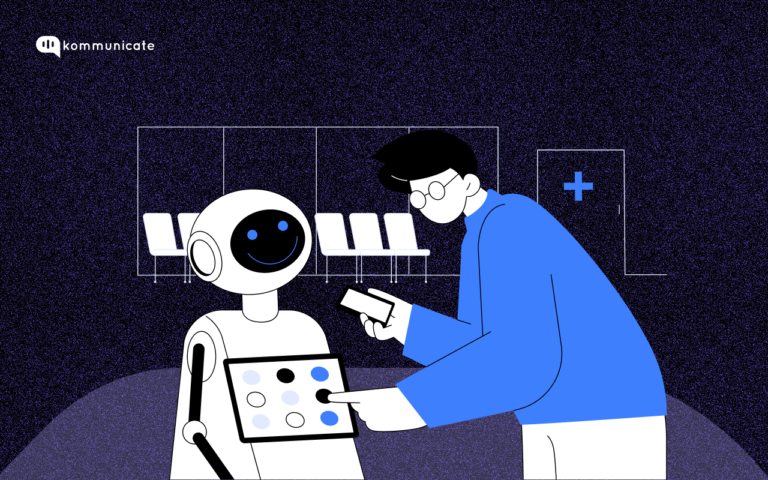Updated on December 27, 2023
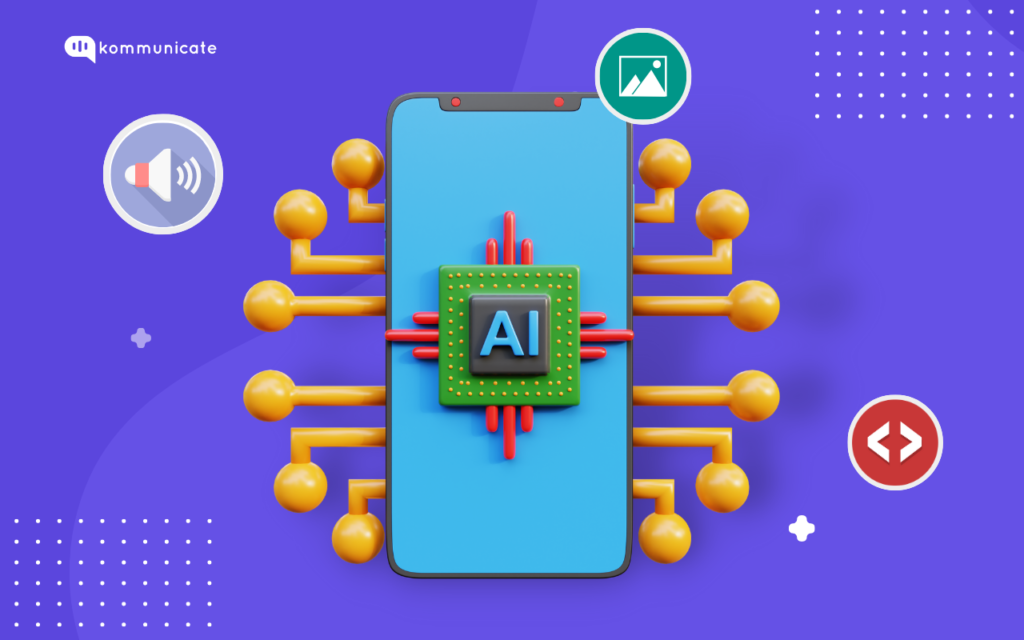
Let’s play a game.
There are 2 short paragraphs of sentences that follow. ChatGPT wrote one of them.
The other one was written by yours truly.
Can you tell which one is which? The subject is “ Funny way of explaining the layoffs in the US tech industry.”
Paragraph 1
Imagine a world where you get up in the morning, log into work, and are just vibing to the new OneRepublic song, like you do on Mondays, when you get an email from your manager. “Can you please come into Conference Room 101, John? And get your laptop too.” You walk into the room, and suddenly there are 3 guys sitting in the room, and your manager is speaking rather somberly, that the company no longer requires your services. You hear vague terms like “restructuring” and “recession” and “new Economic Reality,” but in your head, instead of OneRepublic, it's Gotye singing “You didn’t have to cut me off..” You don’t have to imagine all this, because this was the sad reality for more than 66,000 tech workers in the US alone, according to a report by Crunchbase. Welcome to the world of tech layoffs. If you are working in the tech industry, you better strap in, because some turbulent times lie up ahead.
Paragraph 2
Well, you know how it is in the tech industry... One minute you're the hottest app in town, the next you're yesterday's news. Sometimes companies restructure, or get acquired by a bigger fish and suddenly there's too many cooks in the kitchen. And don't even get us started on the robots. They're taking over, and we're not just talking about customer service. It's like the Terminator, but instead of Judgment Day, it's Layoff Day. So if you hear the rumor mill buzzing about cuts, better start polishing your resume, because it's a wild ride in the tech world!
If your guess was that Paragraph 1 is written by me, you are right. But how difficult was that guess? Considering the fact that paragraph 2 was also funny, it did explain the layoffs, and it also ended similar to paragraph 1?
Also, can you ponder for a moment how scary that is? Artificial intelligence trying to make jokes? It is like that F.R.I.E.N.D.S Episode, where Monica tells Chandler Bing that she met someone funnier at her workplace.
Except that funnier someone was a machine. A computer. A form of artificial intelligence.

Like a chatbot. One that you can build in less than 10 minutes.
Generative AI, ladies and gentlemen, is the buzzword these days, and in this post, we are going to cover some of the basics of it such as:
- What is Generative AI?
- The technology behind Generative AI – How Generative AI Works
- Applications of Generative AI
- Will Generative AI make us Knowledge Workers obsolete?
- Future of Generative AI
What is Generative AI?
This is a tough question to answer, since the term has been a buzzword for a few months now after the launch of ChatGPT. Before that, we were already familiar with its infamous cousin, Artificial Intelligence.
When you use Artificial Intelligence to create new text, video, audio, ai images or any form of data, you can classify this under Generative AI. This is an umbrella term.
Any time Artificial Intelligence is used to create something on its own, we call it Generative AI. For instance, there are websites like Midjourney that use prompts from users to generate entirely new images. Like this one:
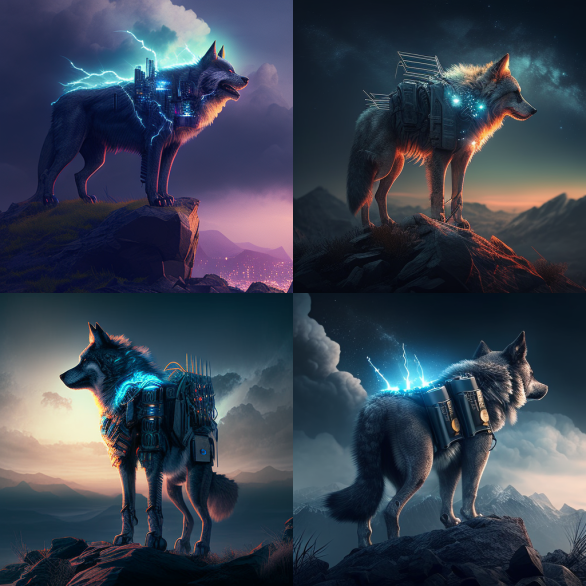
A user on the Midjourney platform who goes by the name Beard, who was asking for a “Dire Wolf strapped with a battery pack with a lighting in the background.”
And the AI did the rest. Impressive, isn’t it?
ChatGPT, Midjourney, Stable Diffusion, DALL-E, these are just a handful of Generative AI tools that are out in the market today.
We have already seen how powerful ChatGPT can be. So now, what powers these Generative AI tools? Let’s take a look under the hood.
How does Generative AI Work?
In 2021, when the world was still recovering from the pandemic, there came out a movie starring Tom Hanks called Finch. The movie featured Tom Hanks as a robotics engineer who builds a robot to take care of his dog after his death, since most of humanity has been wiped out due to an apocalyptic solar flare.
While the movie didn’t make that big a wave at the box office, why we are mentioning it here is the fact that in a scene in the movie, the robot starts to paint by itself, out of dreams that it had!!

An artificial intelligence robot that paints by itself.. Hmm.. Science fiction? Yes.
Already a reality? Well, we are almost there, like we showed.
There are companies out there like Boston Dynamics and Tesla doing incredible things with robots.
Add Artificial Intelligence and Generative AI into the mix, and you never know how advanced technology will get.
But how is Generative AI done? Under the hood. Let’s take a look:
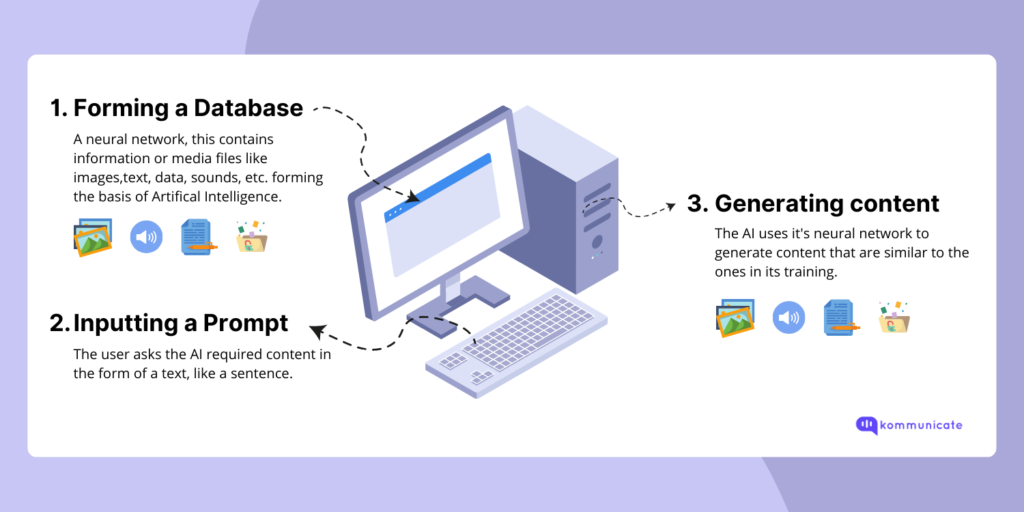
Generative AI depends a lot on the training data that you have fed into it.It analyzes the patterns and structures of the input data, and thus “learns.”
Now, when you ask it for an entirely new form of data, it just uses historically stored “training data” to create something that is statistically similar to what it knows. This is just explaining it in simple terms, but there is a lot of computation that goes on behind the scenes.
Some of the more common terms you need to be familiar with, if you want to understand how Generative AI works, are:
1. Variational AutoEncoders:
Variational AutoEncoders (VAE) is just a fancy name given to an Artificial Intelligence Algorithm. The VAE typically has two main purposes, encoding and decoding information. This ability to reconstruct data as and when required, and storing them in “latent space,” makes Variational Encoders extremely powerful. VAEs teach themselves how to go from an input data form to a latent space, and then vice versa, through AI algorithms called Neural Networks.
2. Neural Networks:
Neural networks are AI Algorithms that are extremely good at identifying patterns of data. Just like our brain that has hundreds and thousands of neurons, a Neural network has hundreds and thousands of small imaginary units, referred to as nodes. Nodes are arranged in the form of layers, and information generally enters the input layer, passes through the hidden layer, and exits out through the output layer. Here is a representation of a neural network:
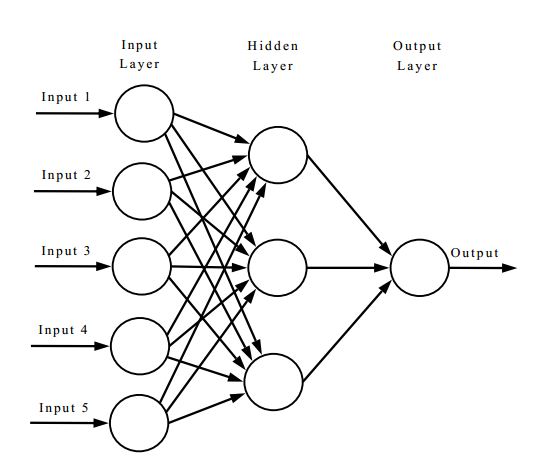
3. Generative Adversarial Networks (GANs)
In simple terms, GANs are computer programs that learn how to bring into existence things that are not yet there, including brand new pictures or music. The goal of a GAN is to create a new, synthetic form of data that resembles historically stored data. It does so by making two sets of neural networks compete against each other in a zero sum game.
A GAN has 2 parts, called a generator and a discriminator. Imagine if you want to draw a picture of a bear, but using the help of a GAN. The generator first draws an approximation of a bear, which the discriminator tries to guess if it was made by the generator. If the discriminator guesses correctly, then the generator goes back to work, getting progressively better at drawing the picture.
This is the zero sum game that we have been talking about, and, in the end, the generator gets really good at drawing the picture of the bear.

These are just broad umbrella terms, and if you really want to dig deep into the world of Artificial intelligence and how it works, there are tons of posts out there on the internet.
We now know how powerful Generative AI is and also a small idea on how it works. So where do we go from here? What are the use cases of Generative AI?
Let’s quickly take a look.
Applications of Generative AI:
Generative AI can create a variety of content. Generative AI is also becoming increasingly popular in social media for its ability to automatically generate personalized content based on user data and preferences. This much we know. But there are other, lesser-known fields where Generative AI will be a powerful disruptor. Here are some of them:
1. Game development and Movies:
CGIs in movies are a multi-billion dollar industry, and one that Generative AI finds a unique application in. You can use Generative AI to create new videos and images, literally out of thin air. The imagination of a 3D animator and the storytelling power of a scriptwriter, all rolled into one powerful computer package. That’s Generative AI for you.

2. Content Creation / Text Generation:
Writing product descriptions is one of the most repetitive and time-consuming tasks that any writer faces and something that a machine can easily do – like an AI product description generator. Well, the makers of GPT-3 were more than happy to grant that wish, and today, this powerful AI tool can spin out volumes of text based on a small prompt. GPT-3’s text is so good, that those who moderate content, even find it difficult to distinguish between what’s written by an AI and human.
3. Medicine:
You can train these powerful AI models to generate drug compounds or new molecules that have specific properties. This can help in drug discovery and development, compressing years of research time into a matter of days, if not hours. Infact, AI was used in helping the pharmaceutical company Moderna develop a vaccine for the Coronavirus pandemic.
4. Advertising:
You can use Generative AI to create stunning images as we have previously shown. These are getting better by the day, and, in many cases, you won’t be able to tell the difference between artwork created by a human or a machine. This can help smaller agencies to come up with original artwork, something that costs a lot of money and is only accessible to teams that had deep pockets.
A data research firm from Japan, Datagrid, made these full-body models. They are artificial creations and show us what the future of cataloging will look like.
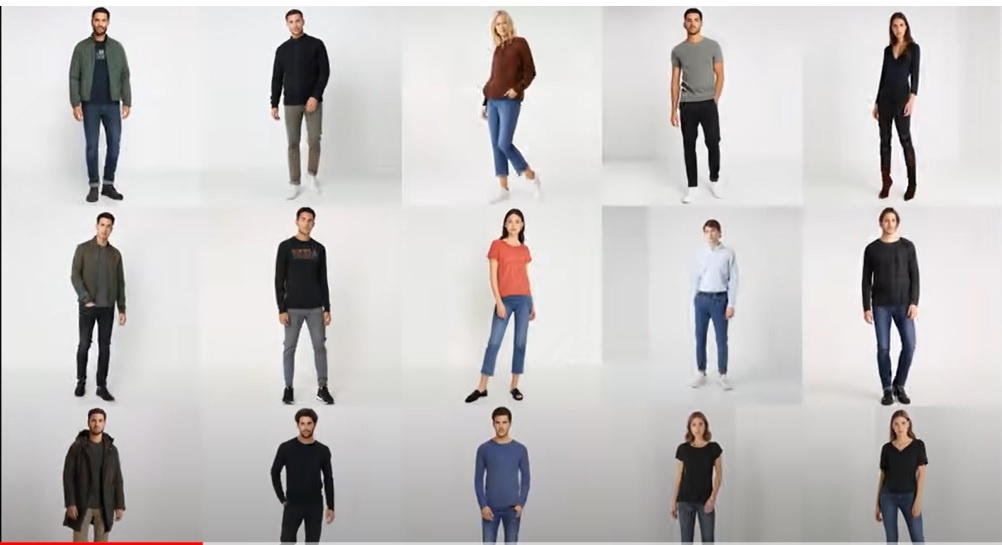
We have seen the various applications of Generative AI. But, as a knowledge worker should you be worried? Let’s take a brief look.
Will Generative AI take my job away?
When ChatGPT was launched to much fanfare in November 2022, there was panic all around.
Youtube videos, Linkedin posts, Instagram Stories, and even the occasional doomsday guy told you that your days as a Content creator / Copywriter are over!!
But wait, hold your horses!!

Generative AI tools such as ChatGPT are not going to take your job away. If anything, they are only going to make you more efficient.
Generative AI currently is really useful when it comes to tasks that involve pattern recognition and prediction, such as NLP. Automating repetitive tasks, such as writing product descriptions, is what Generative AI is good at, and is designed for.
You can consider generative AI as the next step in the evolution of Conversational AI.
Generative AI finds its application in data analysis, and in this case, knowledge workers can use the time that they save to gain more meaningful insights from the data.
As for artists or musicians, Generative AI can never really replace “Original thought.”
In his book, Futureproof, the author Kevin Roose says that
Most A.I. is built to solve a single problem, and fails when you ask it to do something else. And so far, A.I. has fared poorly at what is called ‘transfer learning’ — using information gained while solving one problem to do something else
Kevin Roose
So you don’t have to worry about generative AI taking over your job, at least not yet.
That, however, does not mean you can sit back and relax. The best way forward is to learn how to use Generative AI to make yourself more efficient, and, in turn, indispensable.
The Future of Generative AI
As we are writing this, companies around the world are racing to implement Generative AI into their products. We are working on integrating Kommunicate with ChatGPT, but there are some giants out there that are going one step further.
Google introduced Google Bard as an alternative to ChatGPT. Bard is an AI chatbot with functionalities similar to what ChatGPT has, and Google’s LaMDA(LAnguage Model for Dialogue Applications) powers it.
When writing this piece, Google still hasn’t released Bard to the general public yet and is only available to a select network of private beta users. Bard could beat ChatGPT though, since it has the potential to use up-to-date information, whereas ChatGPT only has training information till 2021.
Microsoft isn’t falling behind in the search race either. After a multi-billion dollar investment in the firm that powered ChatGPT, Microsoft has already sent invites to users for their search engine (Bing) powered by ChatGPT.
Generative AI will get better at understanding language, will get more sophisticated, and will also help in research and development.
The number of fields that Generative AI will touch is mind-boggling, and every day, there are new fields that are emerging as potential use cases. We cannot ignore Generative AI, but can only live with it.
As Stephen Hawking put it, “Intelligence is the ability to adapt to change. ”
At Kommunicate, we envision a world-beating customer support solution to empower the new era of customer support. We would love to have you onboard to have a first-hand experience with Kommunicate. You can signup here and start delighting your customers right away.



